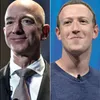Movie-studio Pixar, known for producing blockbuster films like Finding Nemo and Toy Story, is possibly one of the few studios in Hollywood that can attract its audience based only on its reputation.
Talking about Pixar’s success, author Robert Bruce Shaw in his book Extreme Teams: Why Pixar, Netflix, Airbnb, and Other Cutting-Edge Companies Succeed Where Most Fail, says the story of Pixar is a rare one that doesn’t rest on the capabilities and performance of the teams within a company.
Often unknown to people outside of a firm, the team is the driving force behind a firm’s success. This is particularly true because large and complex firms require something more than any leader can provide — no matter how talented or charismatic he or she may be.
Some of the people responsible for Pixar’s success include Ed Catmull (co-founder and CEO), John Lasseter (co-founder and now chief creative officer, Walt Disney and Pixar Animation Studios), and Steve Jobs (the former CEO of Apple who bought Pixar from Lucas Films and worked with Ed and John to build the Pixar we know today).
The author goes on to talk about how the key to success at Pixar has been in finding people who can work well together, as a team, and in being more supportive and trusting its people.
While Pixar is a film studio, its culture can act as a lesson for startups. By following some of its steps, startups too can build a culture that fosters creativity and trust, which in turn moves the needle in the business.
Leverage talent
The book explains the key factors for the success of a leader and their ability to staff and support teams that is required for a firm to grow.
In a report by Harvard Business Review, co-founder Ed Catmull said,
“Pixar is a community in the true sense of the word. We think that lasting relationships matter, and we share some basic beliefs - Talent is rare. The management’s job is not to prevent risk but to build the capability to recover when failures occur. It must be safe to tell the truth. We must constantly challenge all of our assumptions and search for the flaws that could destroy our culture.”
An example of this is the film Toy Story 2 that was co-produced with Disney. It was failing mid production at an artistic level and the executives realised there was a need for a major overhaul.
This was followed by a nine-month race to create a film that met the release date, but more importantly met Pixar’s high creative standards.
Finding a balance
During this time, many of those working on the film were at the office seven days a week, month after month. In the book, the author shares - During the intense and stressful period of completing the film, one of its animators drove to work one morning and had to drop off his child at the daycare centre.
But, thinking only about his work for the day, he forgot that his child was in the backseat of the car. It was only when his wife called three hours later that he realised his mistake. He raced to the parking lot and found his child in the car seat — fortunately with no lasting harm.
After witnessing this, along with an increasing number of such repetitive stress-related injuries among employees, the Pixar leadership soon decided there was a need to temper the willingness of highly committed people to do whatever it takes to produce a film.
The author says, The problem at Pixar was not that its people lacked motivation, the problem was they were way too motivated.
The leadership team soon learned they need to be aware of aggressive timelines and the potential downside of having a highly committed workforce.
Find people who work well together
For Pixar, having highly talented, motivated, and committed people is not enough. Ed emphasis that the key to success at Pixar is in finding people who can work well together, as a team. This becomes more important while working on projects that can take three to four years to complete and need several thousand decisions.
The author says, “Pixar believes, given the innovative and complex nature of its films, success is unlikely if a team doesn’t “gel”. Or the making of a great film is dependent on a group of people bringing out the best in each team member and creating something beyond their individual capabilities.”
While the popular belief is that people will naturally bond if they become members of a team, this is not true. It is more likely that highly talented and driven people will have difficulties working together given the nature of their personalities.
The book states: “Passionate people are often demanding, stubborn, and idiosyncratic. Pixar, learning from its experience, takes care to staff its teams with people who have complementary skills and personalities — people who can work in the intense and often ambiguous environment.”
But achieving this chemistry is hard. What Pixar does is consider a range of factors like the person’s background, personality, and values along with other considerations like each team member’s work habits. What Pixar wants is a mix of people who have worked together and a few who are new.
“Striving to get people who can work well together is not to create a team of clones. In fact, having people who are too similar may make it easier for them to work together, but it will most likely undermine the team’s creativity. The goal is to find a group of people who can bring their unique talents and experiences to a project and then come together as a team to produce something beyond what they could do as individuals,” quotes the book.
Focus on the core
Pixar works with the assumption that to make a great film, the story needs to be the core and has to be perfect. Everything else is secondary.
The book states the firm further believes that the way to get the story right is to get the team right. Great teams produce great stories — not the inverse. Pixar has a host of practices to maximise the likelihood of a team pulling together to produce a great story.
For example, the firm gives its teams very direct and tough feedback during the making of a film. This feedback comes, in part, from what it calls its “brain trust,” a group of mostly senior leaders who have directed Pixar films themselves. This group, however, has no formal authority to mandate changes in a film. The goal is to provide feedback but not in a manner that takes accountability away from a director and his or her team for the quality of their film.”
The book says - “The job of senior leadership is to closely observe how a team is operating with the belief that the quality of the team members’ interactions is key in producing a great film. A team that is working well together is given more time and protection, even if it appears to have lost its way. A team that is fragmented and failing as a group needs to be changed.”
Signs of a failing team
Pixar has done this many times. A significant number of Pixar directors were once removed midway from their films. This includes the directors of Cars 2, Ratatouille, Monsters U, Brave, and, The Good Dinosaur. This was because the directors had lost confidence in their teams.
The book gives an example - An individual who worked on a number of Pixar films noted that trust in the film’s director is essential.
Once trust erodes, it creates problems. The signs of low trust are numerous: people stop showing up for meetings or spend more time on their phones in the meetings. They will also be more likely to ask the leader to show them what they want — to have the director explain once again his or her vision.
You also see people being rude to others, particularly in other functional groups. They are frustrated that the film is drifting and they take it out on those around them. A loss of trust also results in people not wanting to work on a particular shot because they believe the story will not pan out and their shot will be cut. They may work on the project but don’t put their heart into it.
The lack of commitment is clear in a creative culture like Pixar where emotional investment in a story is important.
Ed, in the HBR report, explains why this is important. He says, a movie contains literally tens of thousands of ideas. They are in the form of every sentence; in the performance of each line; in the design of characters, sets, and backgrounds; in the locations of the camera; in the colours, the lighting, and the pacing.
The director and the other creative leaders of a production do not come up with all the ideas on their own. Rather, every single member of the production group makes suggestions.
Creativity must be present at every level of every artistic and the organisation. The leaders sort through a mass of ideas to find the ones that fit into a coherent whole — that support the story — which is a very difficult task. It’s like an archaeological dig where you don’t know what you’re looking for or whether you will even find anything. The process is downright scary.
Build trust and support
The author says, Pixar takes pride in being more supportive and trusting of its people. The firm’s willingness to remove people is all the more remarkable, given the close interpersonal relationships that exist within the company.
“Many of Pixar’s key hires, particularly in its early years, were friends of those already working there. Friends hired friends who shared a passion for films. John Lasseter noted that his company’s culture was one based on deep relationships: The people at Pixar are my best friends. . . . Not only do I want to see them every day — I can’t wait to see them every day.”
The book explains - Some firms do not encourage close working relationships among their members and, instead, operate in a less personal or emotional manner. Such firms can more easily fire people with less angst than a company like Pixar. It’s not personal — it’s business.
On the other extreme, there are firms that encourage close working relationships among their members but will not take action, or timely action, when people fail to deliver.
Business, in these cases, takes a backseat to personal loyalties. The bonding among people get in the way of making tough decisions, which are often needed to scale the business. Pixar, then, is unique in being softer than most companies (“The people at Pixar are my best friends”) and also harder (“We will fire best friends when needed to make a great film”).
Pixar can struggle at times by being honest about how it operates. The company is very supportive and has an emotional culture. But it always puts story above people. If a director can’t develop a story that meets the firm’s high standards, he or she is removed. They are typically offered other projects within the firm, or their old jobs back, but most don’t stay. It is too tough emotionally to go back when you were just removed from your role because of loss of confidence in your ability.
A company like Pixar is both softer and harder than more conventional companies.
Edited by Megha Reddy
Get access to select LIVE keynotes and exhibits at TechSparks 2020. In the 11th edition of TechSparks, we bring you best from the startup world to help you scale & succeed. Register now! #TechSparksFromHome
Link : https://yourstory.com/2020/10/ys-learn-key-lessons-startups-entrepreneurs-pixar-culture
Author :- Sindhu Kashyaap ( )
October 15, 2020 at 06:45AM
YourStory




